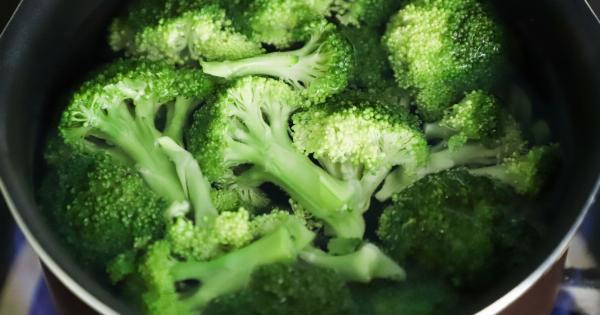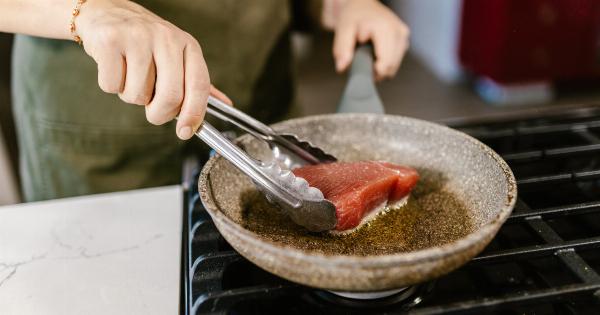Cooking is not just about nourishing our bodies; it is also an art form that allows us to express our creativity and love for food.
One of the secrets to creating deliciously flavorful dishes lies in understanding the importance of ingredients, spices, and cooking techniques. In this article, we will explore various tips and tricks to help you elevate your cooking skills and create mouthwatering dishes that will tantalize your taste buds.
1. Start with Fresh and High-Quality Ingredients
The foundation of any delicious dish is fresh and high-quality ingredients. When you start with the best ingredients, you are setting yourself up for success.
Whether it is fruits, vegetables, meats, or seafood, always choose the freshest options available. Visit your local farmer’s market or look for reputable suppliers to ensure you get the best ingredients for your recipes. Fresh ingredients not only have better flavor but also retain more nutrients.
2. Experiment with Different Flavors
To create truly flavorful dishes, don’t be afraid to experiment with different flavors. The combination of sweet, salty, sour, and spicy can elevate any dish to a new level.
Try adding a hint of sweetness with a touch of honey or maple syrup, balance it out with a pinch of salt, and add a tangy twist with a squeeze of lemon or lime. Don’t forget to spice things up with some chili flakes or other spices that suit your taste buds.
3. Don’t Underestimate the Power of Herbs and Spices
Herbs and spices are like magic ingredients that can transform a simple dish into something extraordinary. They add depth, aroma, and complexity to your recipes.
Experiment with different herbs like basil, thyme, rosemary, and spices like cumin, coriander, cinnamon, or turmeric. Remember to use them in moderation, as a little goes a long way. Freshly ground spices always impart a more intense flavor, so consider investing in a mortar and pestle or a spice grinder.
4. Master the Art of Balancing Flavors
A key aspect of creating deliciously flavorful dishes is mastering the art of balancing flavors. Every dish should have a balance of sweet, salty, sour, and bitter tastes.
For example, if a dish is too sweet, you can balance it out with some acidity from citrus fruits, vinegar, or even a splash of wine. If it’s too salty, try adding something sweet or sour to counteract the saltiness. Experiment with different combinations until you achieve the perfect balance.
5. Learn the Techniques of Layering Flavors
Layering flavors is an essential skill for creating complex and delicious dishes. Start by building a solid flavor foundation with ingredients like onions, garlic, and spices. Then gradually add other ingredients that complement the flavors of the base.
For example, if you’re making a tomato sauce, sauté onions and garlic in olive oil until they are fragrant and golden. Then add tomatoes, herbs, and other seasonings to further build the flavors. This step-by-step approach will result in a deeply flavorful dish.
6. Use Different Cooking Methods
Exploring different cooking methods can open up a world of flavors. From baking and roasting to grilling and sautéing, each method offers a unique taste profile.
For example, roasting vegetables brings out their natural sweetness and deepens their flavor, while grilling imparts a smoky note. Don’t limit yourself to just one cooking method; be curious and experiment with various techniques to discover new flavors.
7. Don’t Forget about Texture
Texture plays a crucial role in creating delicious dishes. A combination of different textures can make each bite more interesting and enjoyable. Experiment with crispy, crunchy, creamy, and chewy elements in your recipes.
For example, you can add some toasted nuts or seeds for crunch, use a creamy sauce or dressing, or even incorporate some chewy dried fruits. Paying attention to texture will take your dishes to a whole new level.
8. Enhance Umami Flavors
Umami, the fifth taste sensation, is known for its savory and rich flavor. Enhancing umami flavors in your dishes can make them incredibly delicious.
Ingredients like mushrooms, soy sauce, miso paste, Parmesan cheese, and Worcestershire sauce are all excellent sources of umami. Incorporate these ingredients in your recipes to amplify the taste and depth of flavor.
9. Pay Attention to Temperature and Cook Time
Temperature and cook time are crucial factors that can significantly impact the flavor of your dishes. Different ingredients require different cooking temperatures and times to achieve optimal flavor.
Overcooking can result in loss of flavor and texture, while undercooking may leave certain ingredients bland. Invest in a reliable food thermometer to ensure your meats are cooked to the perfect temperature, and always follow recommended cook times for various ingredients.
10. Tasting and Adjusting
Lastly, never underestimate the power of tasting and adjusting your dishes throughout the cooking process. Always taste your food as you cook and make adjustments as needed. If a dish lacks flavor, you can add a pinch of salt or a squeeze of lemon.
If it’s too spicy, try balancing it out with a touch of sweetness or creaminess. Trust your taste buds and make small tweaks along the way to create harmonious and delicious dishes.






























